Part 20: 2281-2290: The Great Silence
The Great Silence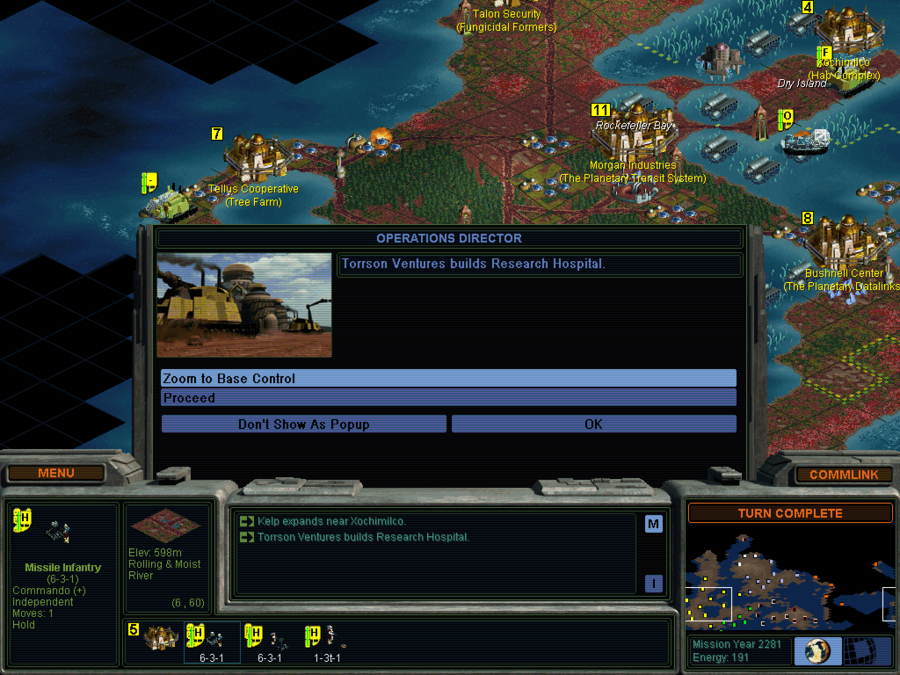

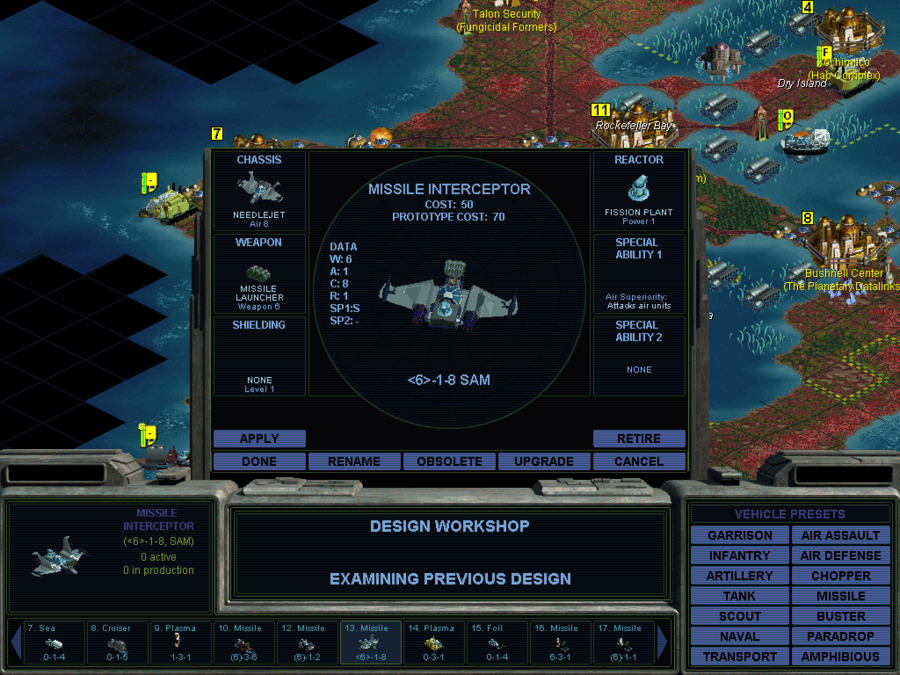
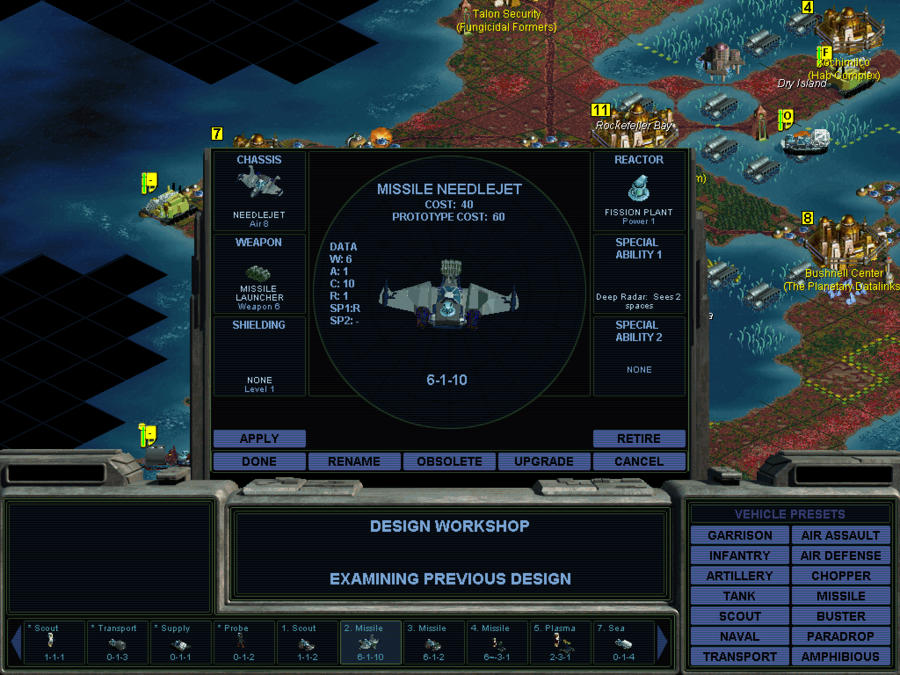
2281 was a year of major developments for North Pholus. Not only did North Pholus' third major research hospital open in Torrson, but the year marked the first test flights of experimental aircraft flown by Gruber Advanced Engineering. With synthetic fossil fuels available, jet engines were once again able to be created, and the skies opened up to humanity once again. Still, without major new investment in infrastructure for air travel, the impact of these new developments would remain relatively limited, for the moment.
The 'Missile Needlejet' is a ground-attack plane; any ground-attack plane will trigger pacifism penalties for us even while parked in one of our own settlements. The Missile Interceptor is specifically designed to attack enemy air units, and will not trigger pacifism penalties. It might be a good idea to get some interceptors in place, once there's any threat of enemies using air power on us.
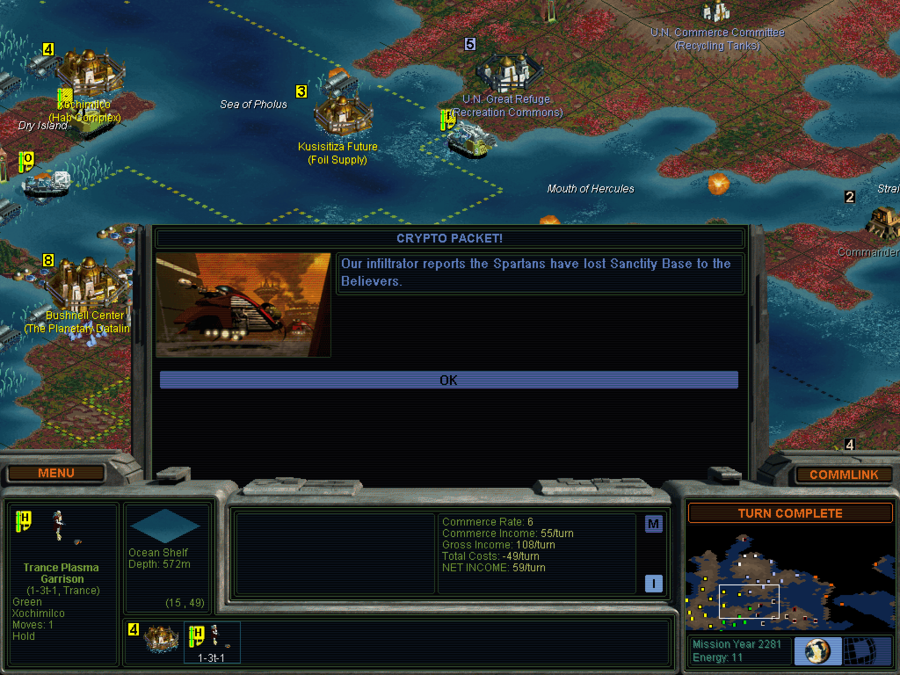
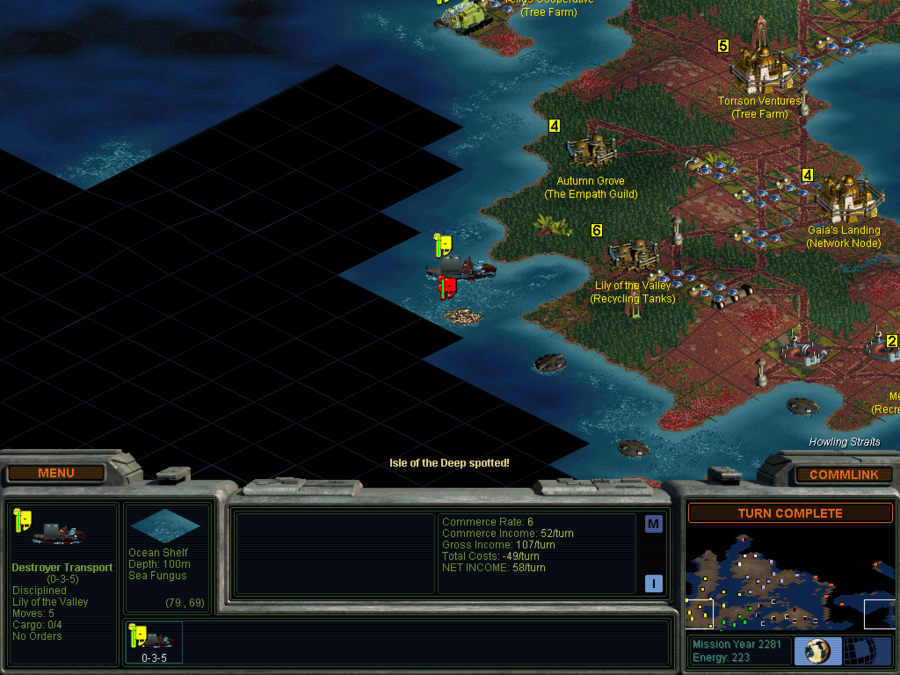
Meanwhile, news came that the Spartan Federation's gains in southern Chiron Minor were reversed as the Holy States recaptured Sanctity Base. The exploratory mission into the Howling Straits was forced to divert by the appearance of an Isle of the Deep, heading off into the Sea of Mnesimache rather than risk a close encounter.

In 2282, sunspot activity on Alpha Centauri began to intensify dramatically, bringing with it an increase in electromagnetic static and a disruption of long-range radio communications across Chiron. Communications between colonies grew irregular, with news conveyed by trade ships but long-distance broadcasts impractical. Within individual colonies, communications suffered their own difficulties, but internal hardwired networks allowed settlements within each colony to maintain contact with one other another, at least through their datalinks.
A very annoying random event.
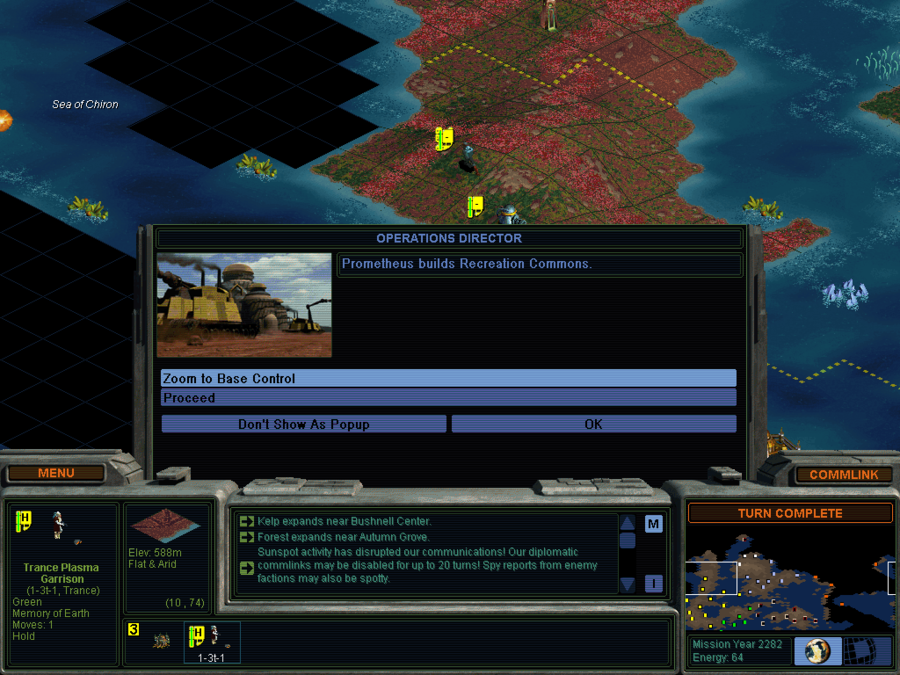
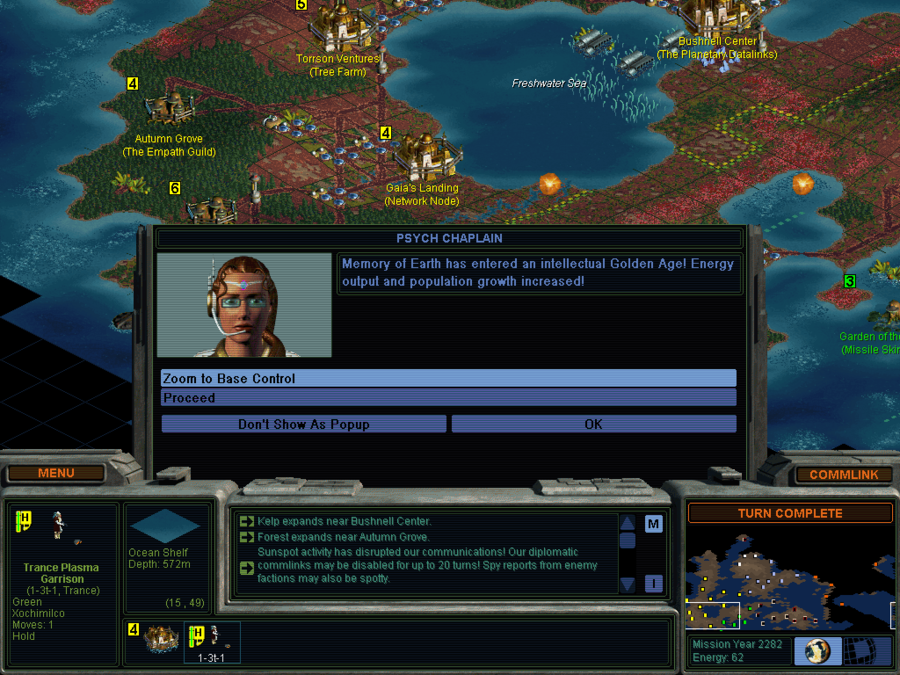
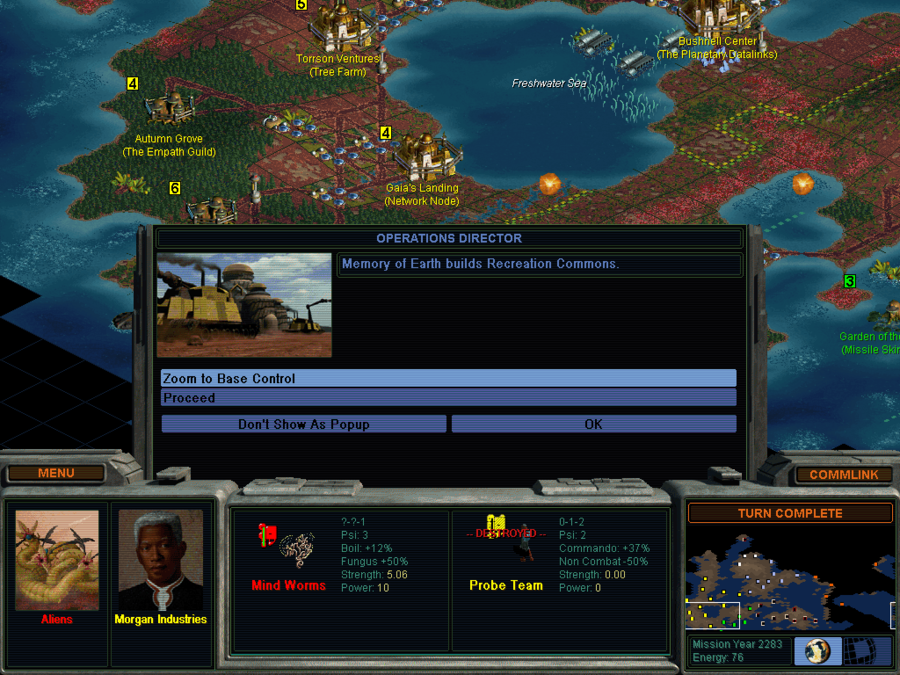
Despite any such difficulties, North and South Pholus continued to develop, with Prometheus developing a more refined ecosystem of support businesses for the population, while Memory of Earth began to exhibit the same high per-capita productivity common across North and South Pholus, and, a year later, joining the rest of North and South Pholus in supporting its own healthy ecosystem of entertainment and dining businesses.
With Memory of Earth in Golden Age, we now have every settlement in our colony in Golden Age. This is a very nice landmark, I'd say.
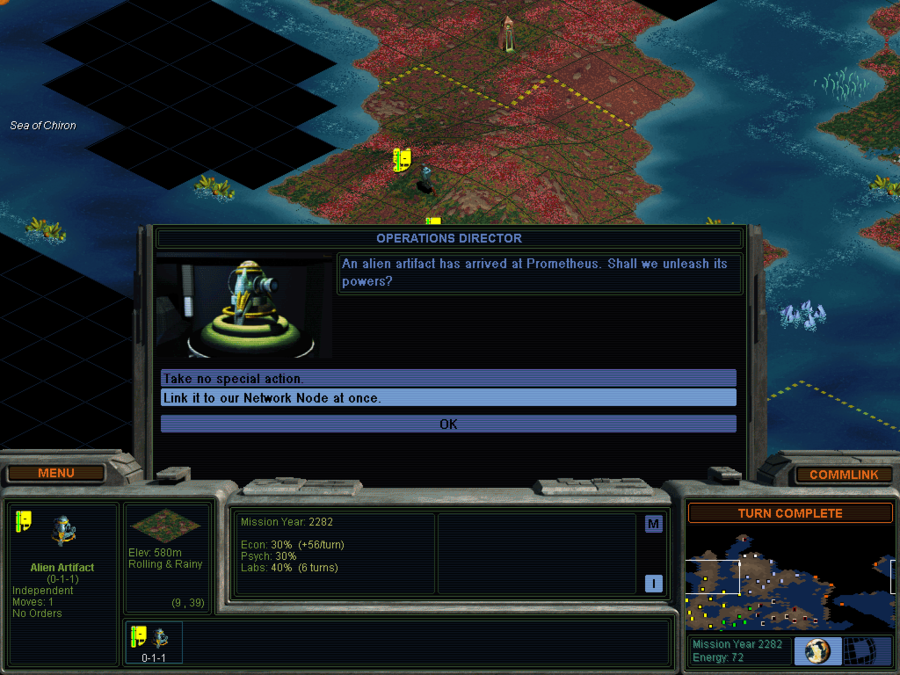
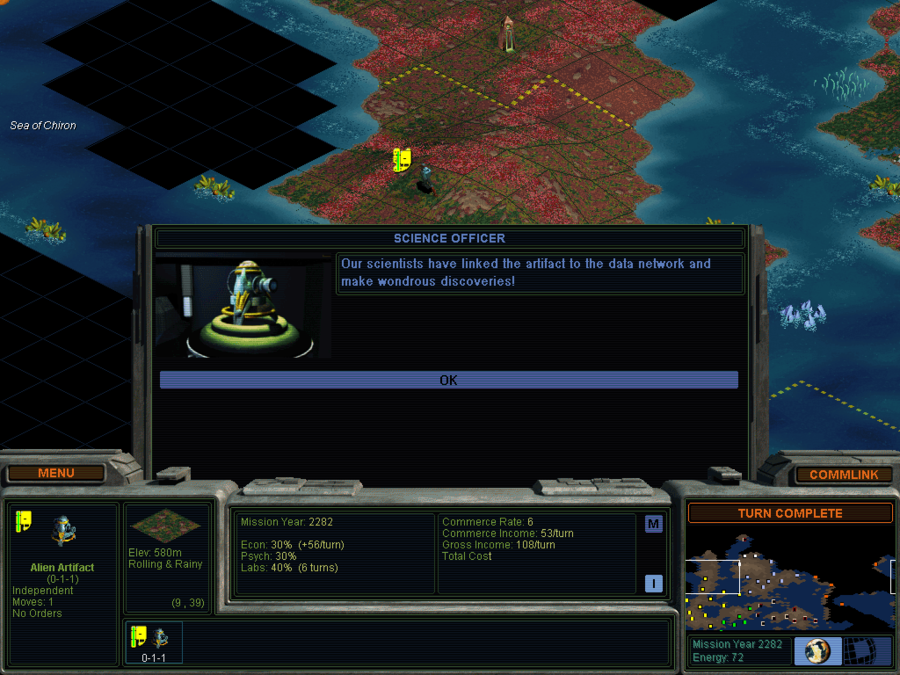
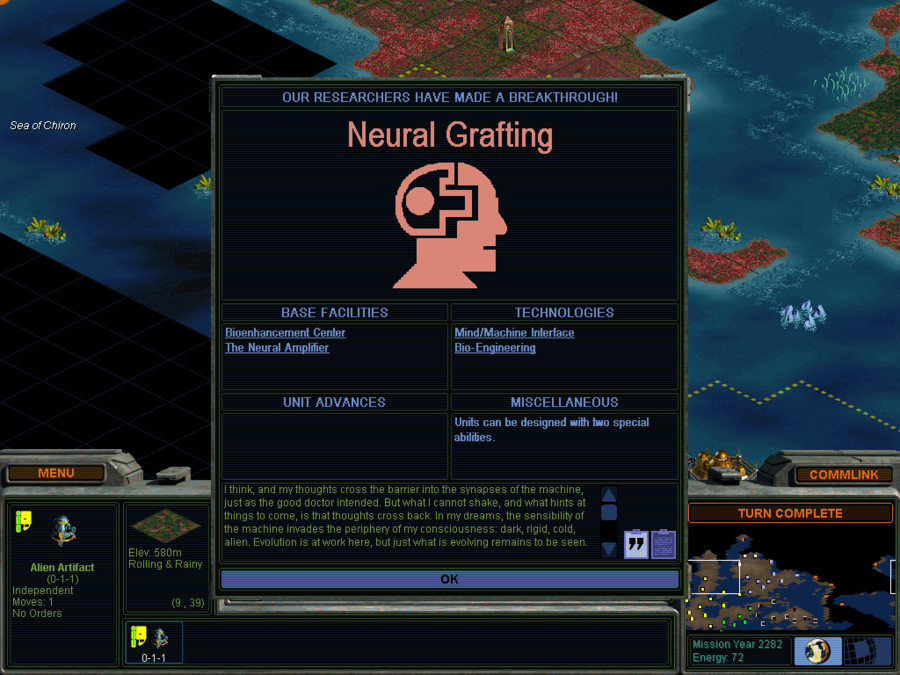
What's more, another alien artifact was brought in for analysis at Prometheus in 2282. Exhaustive study eventually led researchers to conclude that, although they were unable to determine the original purpose of the device, that it did have interface elements that seemed to be designed to integrate with a biological nervous system. Although much of the design was based on technology not yet understood or was not directly applicable to human subjects, nonetheless the insights provided by studying these interfaces were productive in allowing the development of implants tied directly into a human nervous system, making for extremely efficient prosthetics and some devices that actually extended human capabilities. As the control methods thus perfected were limited to mimicking the control pathways humans have in their own bodies, the practical range of applications for implants remained limited to copies of existing human body parts, only faster, stronger, more durable, or more acute in senses.
The Bioenhancement Center unlocked by Neural Grafting is fairly neat- it provides Morale upgrades for units built there, like a Command Center or Naval Yard, but applying to land, sea, and air units, and cumulative with the effects of a Command Center, Naval Yard, or Aerospace Complex. With a Command Center and Bioenhancement Center, we should have Commando Troops 'out of the box'.
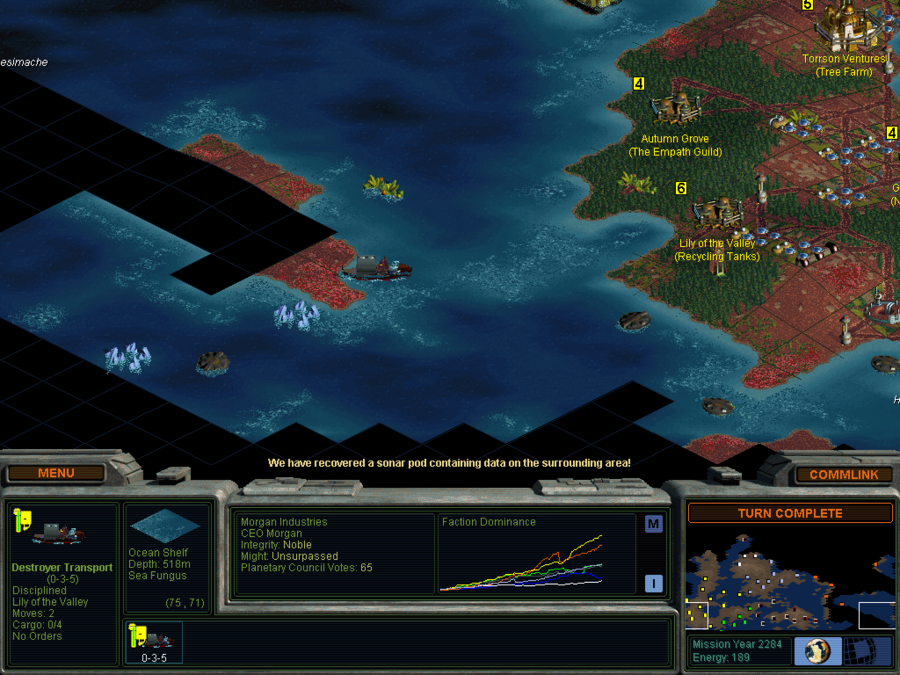
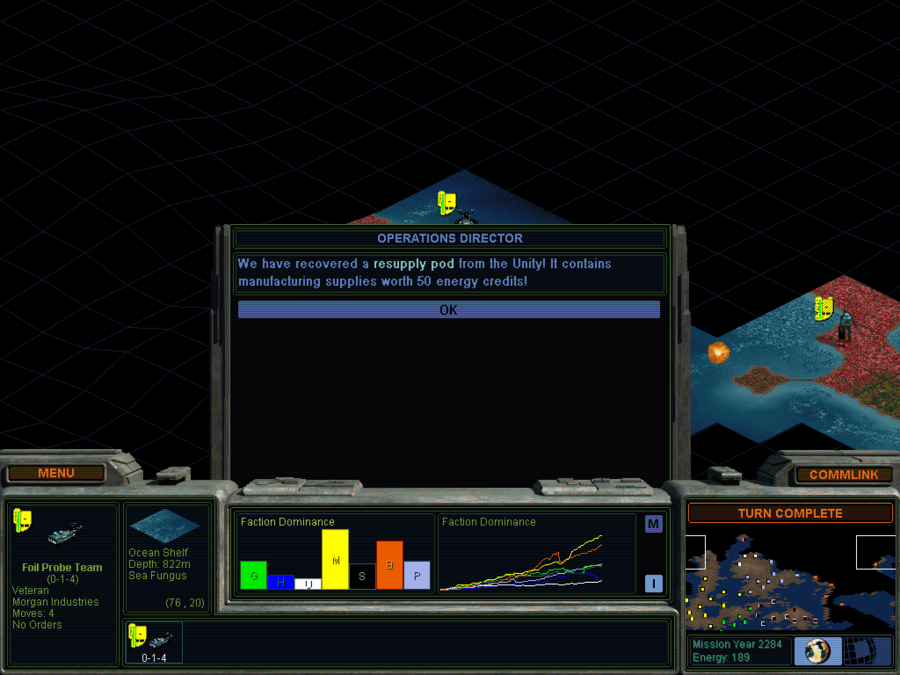
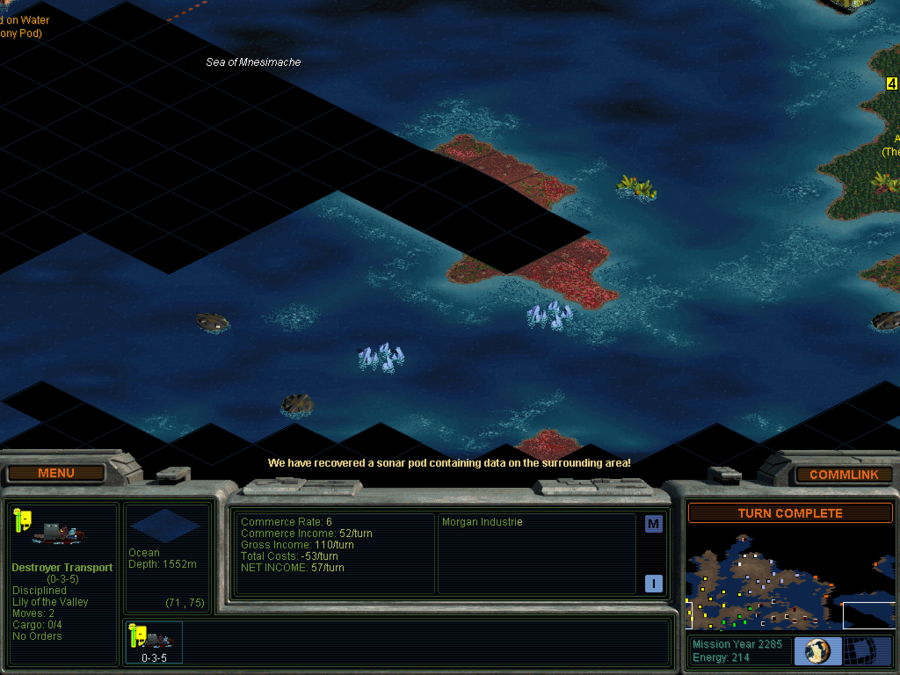
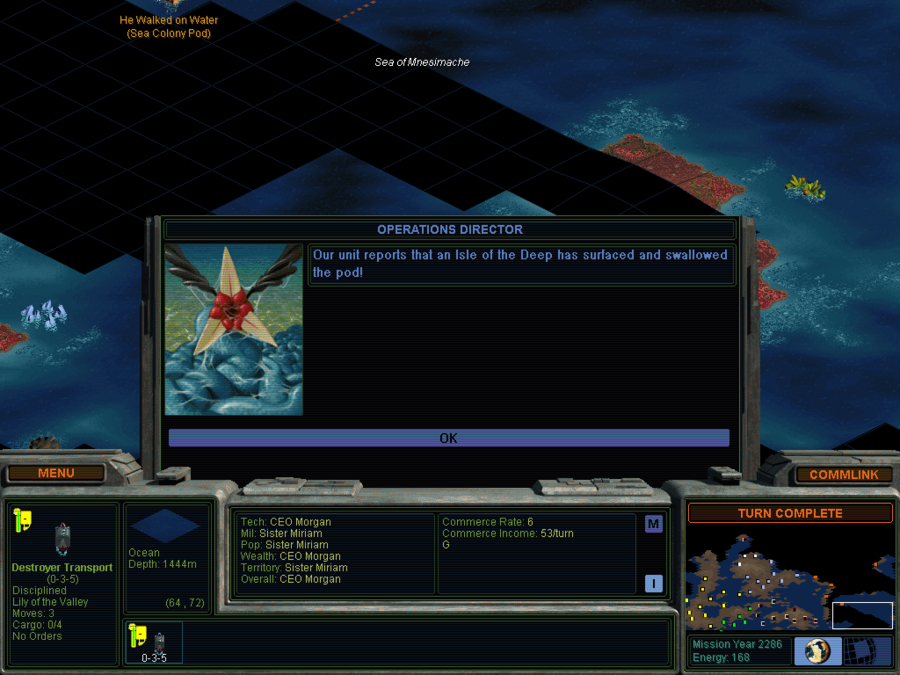
Multiple Unity cargo pods were recovered over the course of the exploratory expeditions into the Sea of Chiron and Sea of Mnesimache. Sonar mapping data of the Sea of Mnesimache and industrial tools and supplies found in the Sea of Chiron proved of value to the colony, but in 2286, a pod infested with mindworms was recovered, which was only barely fought off by the security forces on the exploratory ship that had found it.
I had very bad luck catching a lot of mindworm battles this update- the game doesn't give you a wide window of time before changing focus and losing the information display, and I kept snapping shots just a moment too late. Annoying.
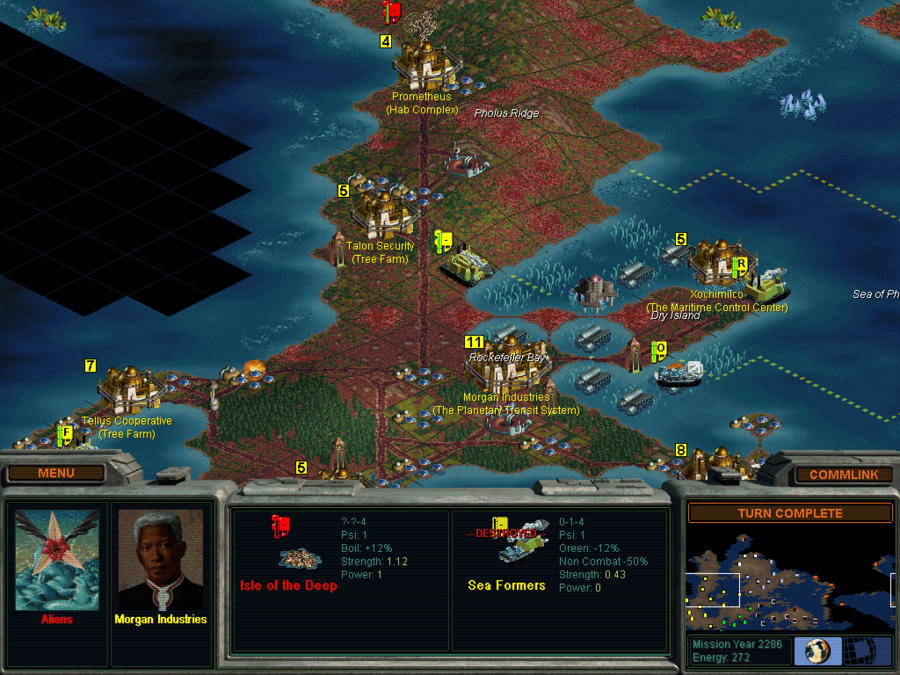
This was not the only incident with mindworms that year, as an Isle of the Deep began hunting the terraforming ships around Kusisitiza Future, wiping out the terraforming capability of the Republic in the Sea of Pholus.
We lost both sea formers to this Isle of the Deep.
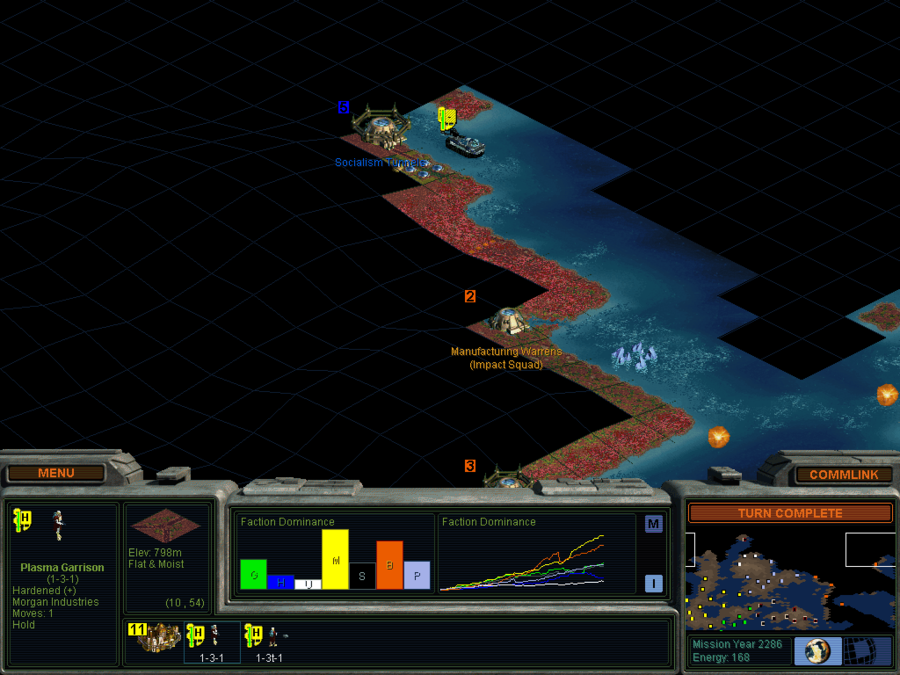
As Isles of the Deep wreaked havoc in multiple seas, the Intelligence Service mission sent to locate the Pod 2 colony finally found a coastal settlement under the control of the 'Human Hive'. Sheng-Ji Yang, the acting captain of Pod 2, had set himself up as absolute dictator of the colony that had grown from his settlers, forcing them to live in settlements bored into the ground and striving mightily to exterminate any traces of individuality amongst his people. The ominous rumors which had come from the Holy States regarding the Human Hive began to be verified by the Intelligence Service.
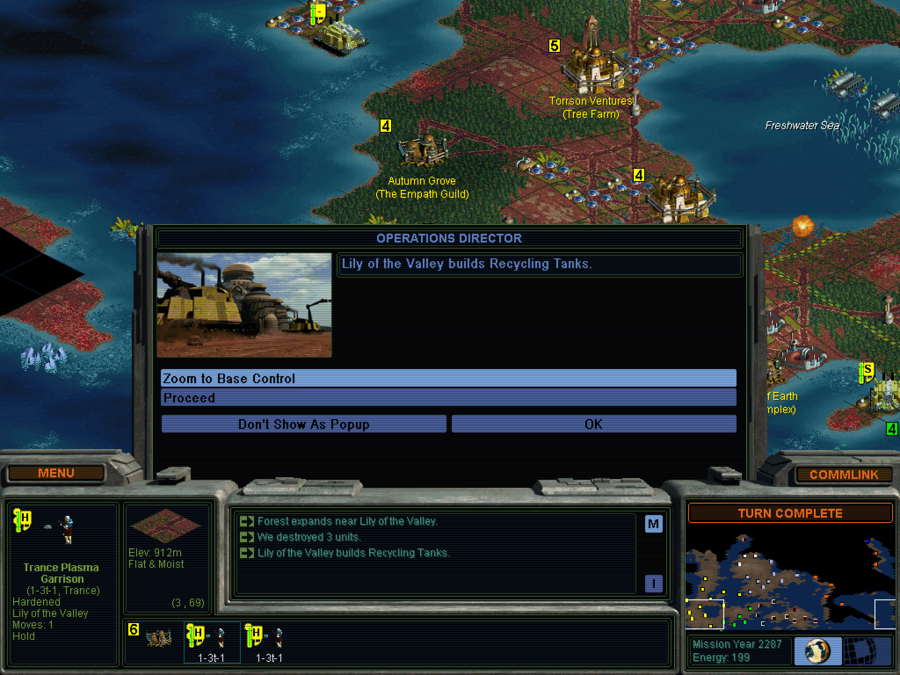
In 2287, organic reprocessing plants went into business in Lily of the Valley, handling the organic waste of the settlement and helping ensure its continued prosperity.

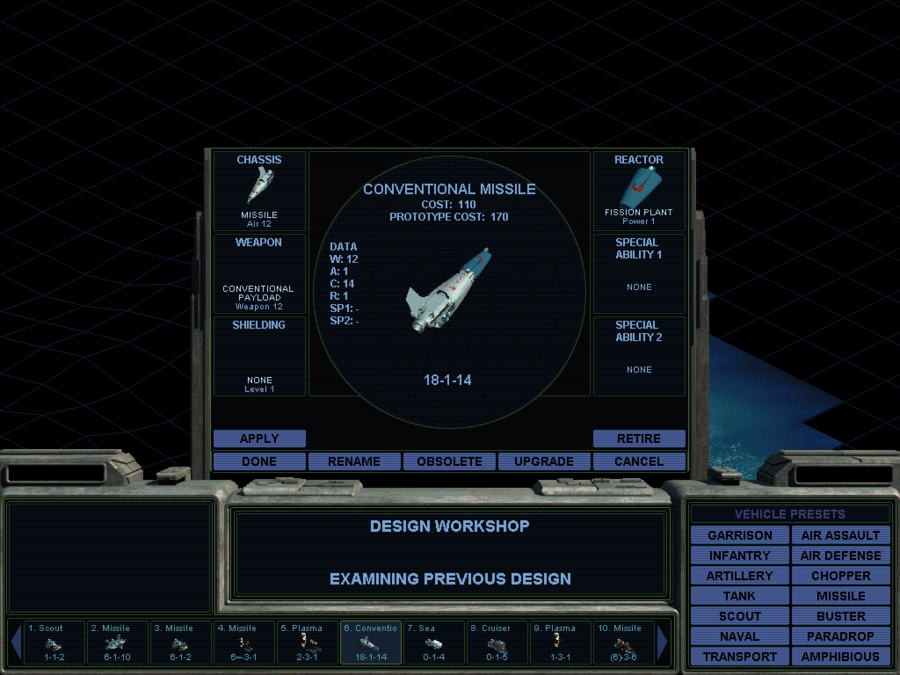
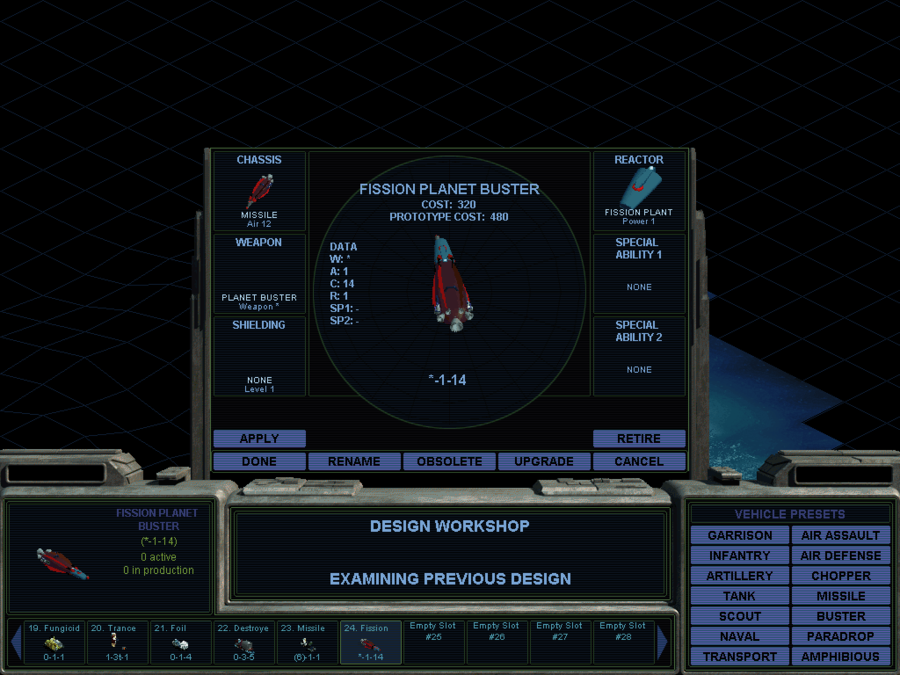
That same year, Gruber Advanced Engineering, not content to rest with mere atmospheric aviation, developed sophisticated rocket engines that would allow for launches into orbit. With the proper space launch facilities, the Space Age on Chiron could begin. This also opened the door for intercontinental missiles, with either tactical warheads or massive strategic warheads designed to devastate entire swaths of countryside.
You need Aerospace Complexes to launch satellites at all, and settlements without Aerospace Complexes get only half benefit from satellites, but satellite infrastructure gives bonuses to every settlement in your colony. Each Sky Hydroponics Lab is worth +1 Nutrient in every settlement, up to a maximum of the settlement size. Missiles are not something I tend to be a huge fan of- conventional missiles have a powerful attack, but only get the one shot, and are expensive to build. Planet Busters can wipe out everything in a wide radius, but are an unambigious major atrocity to use.
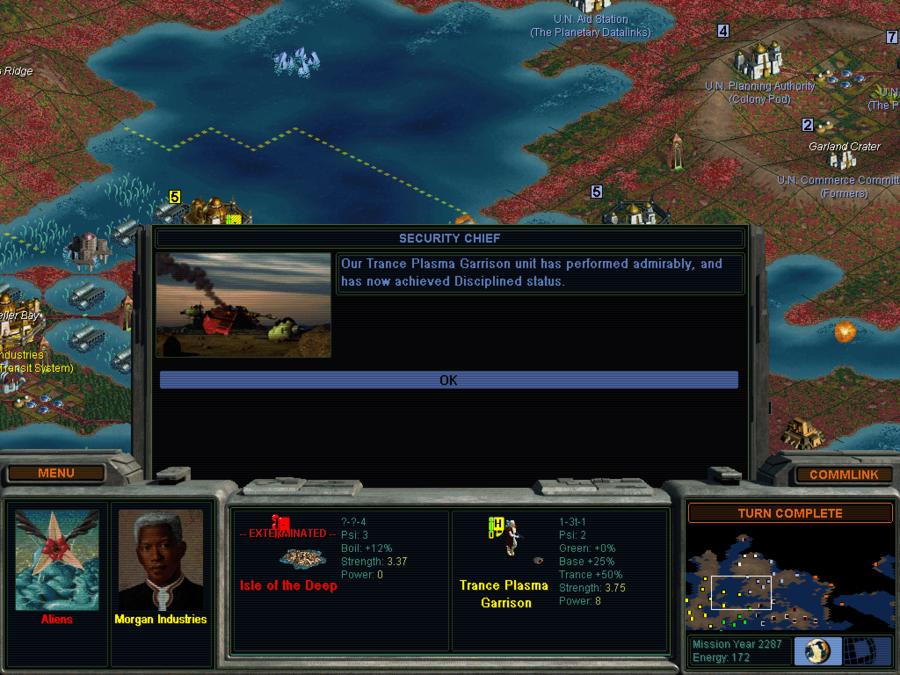
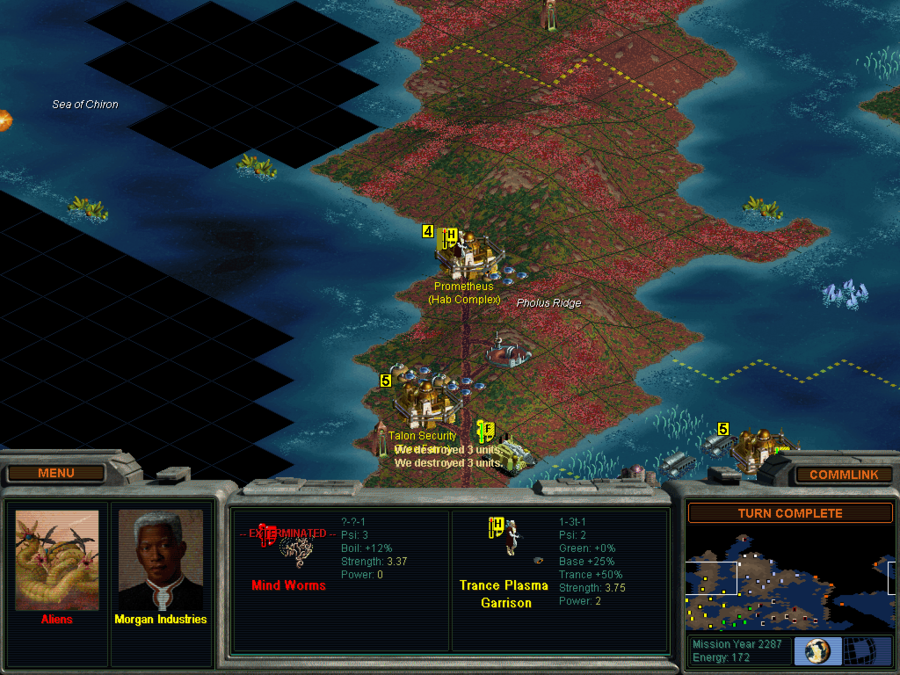
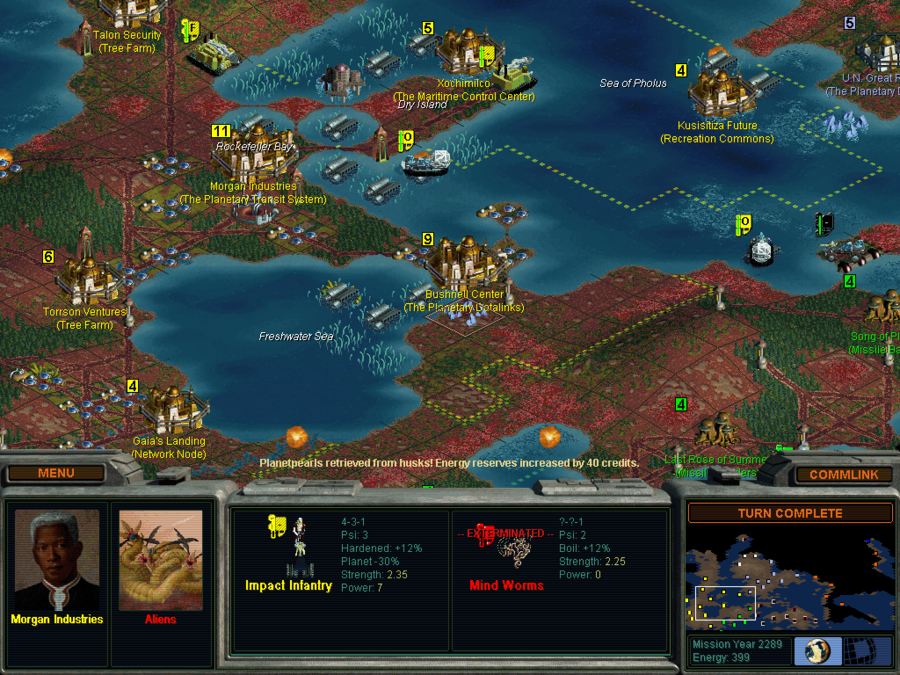
Over the course of 2287, both the isle of the deep ravaging the Sea of Chiron and a swarm of mindworms descending on Prometheus were fought back back by local security forces in Prometheus and Kusisitiza Future. Two years later, another mindworm swarm, which had wiped out terraforming teams outside Bushnell Center, was destroyed by the full force of local Bushnell forces, although a company of troops was shattered by the worms' powers driving them to madness and frenzy.
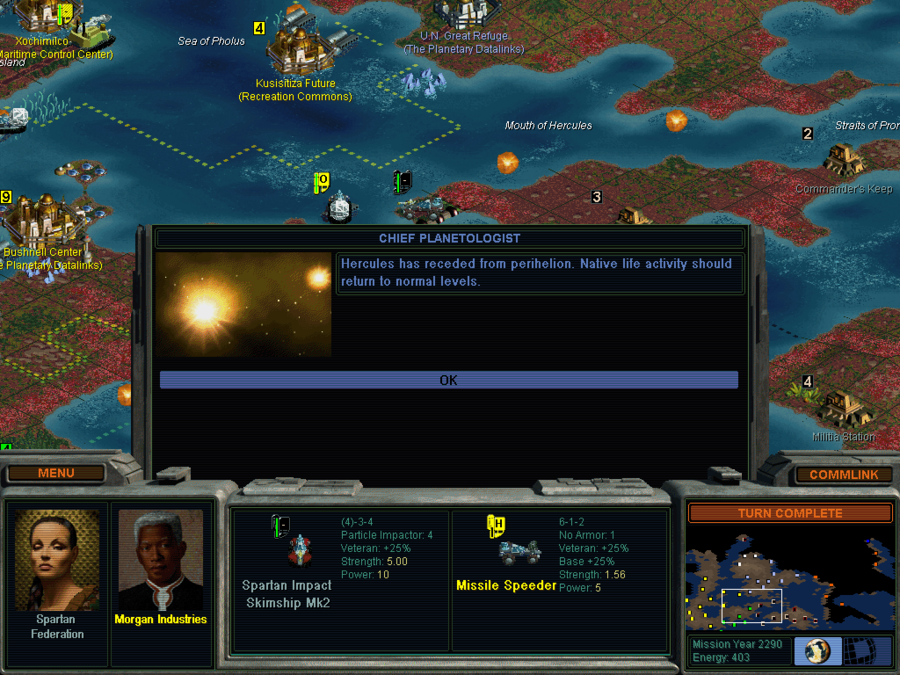
By 2290, the perihelion of the Centauri system's binary came to an end, and mindworm activity began to drop back to normal levels. Although mindworms had caused tragic losses, North Pholus had survived, and had situated itself to be more secure by the time the next perihelion arrived.
The Republic of North Pholus and Protectorate of South Pholus as of 2290
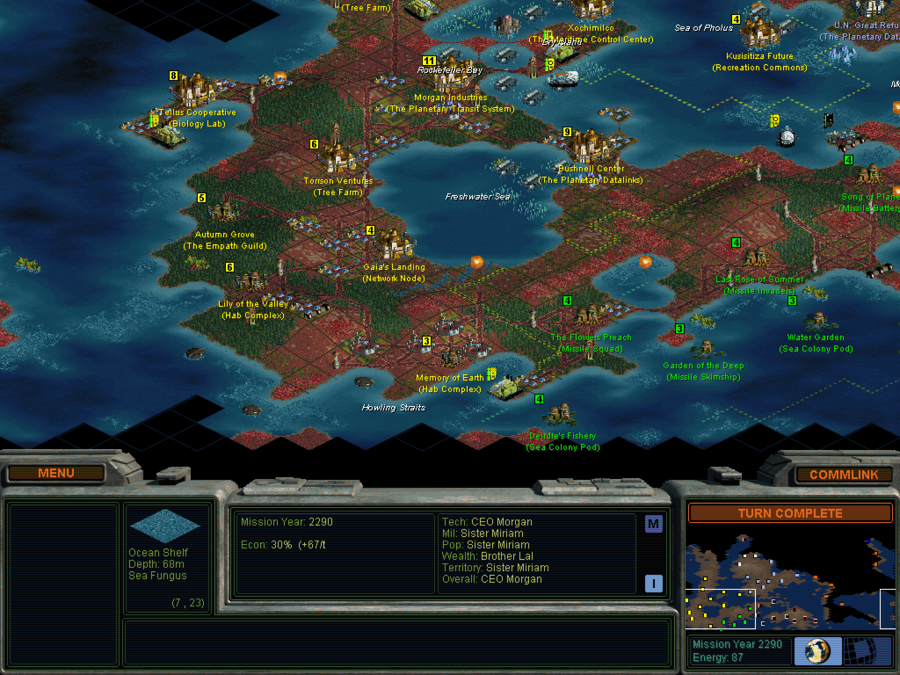
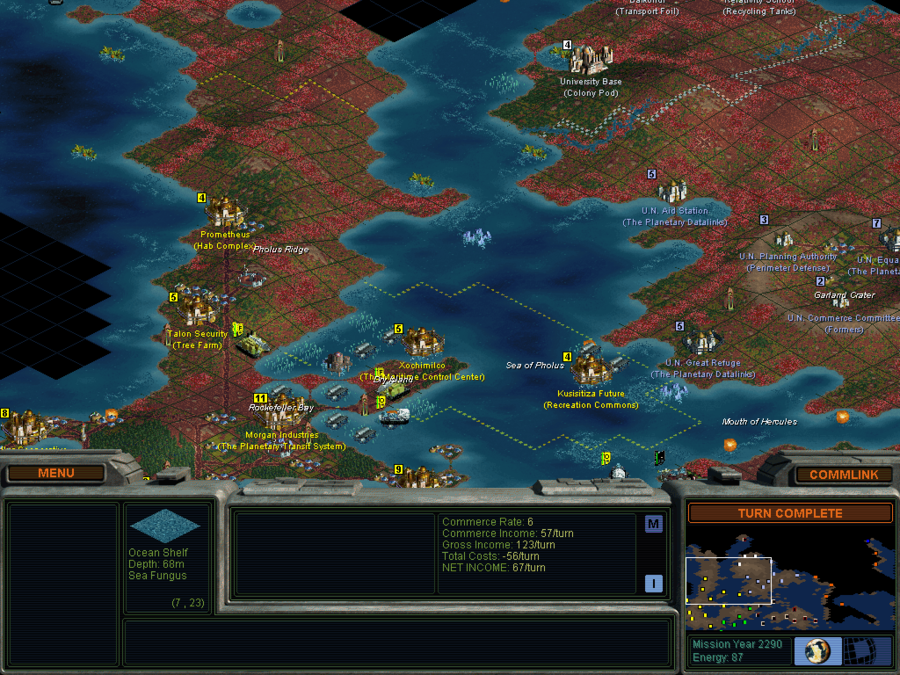
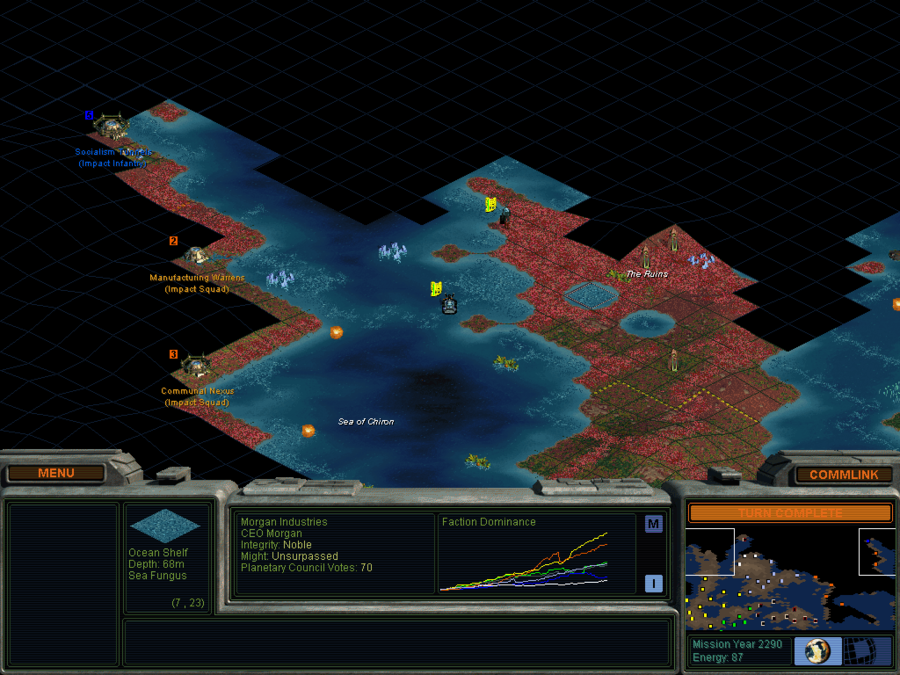
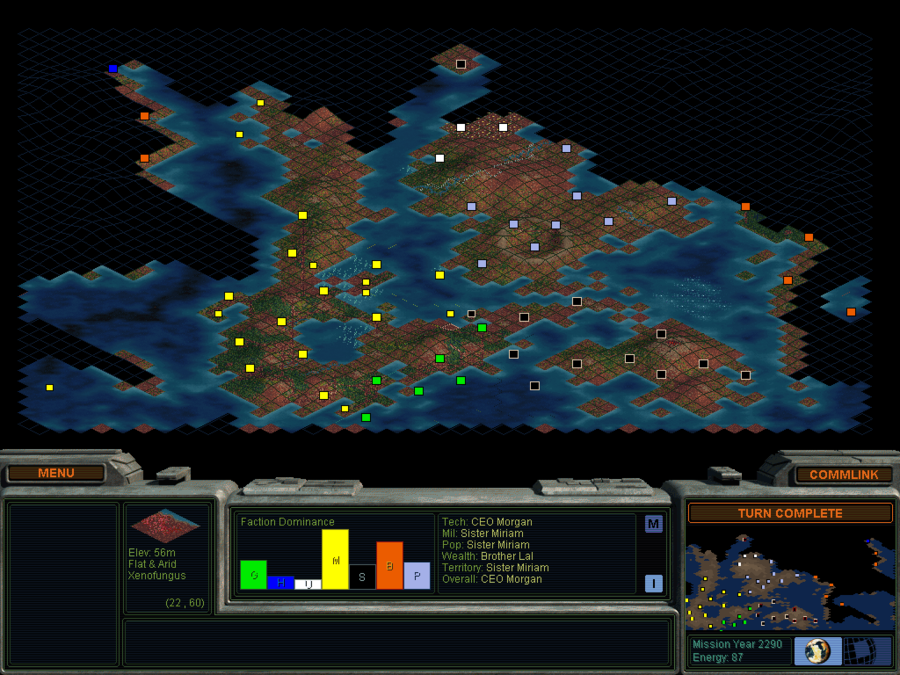
So far, the war between East Pholus and the Spartan Federation has been fought primarily by continued artillery bombardment of Song of Planet, with North Pholus yet to be formally involved. The xenofungus has very slowly been pushed back, although terraformer losses over the past twenty years have slowed this process.
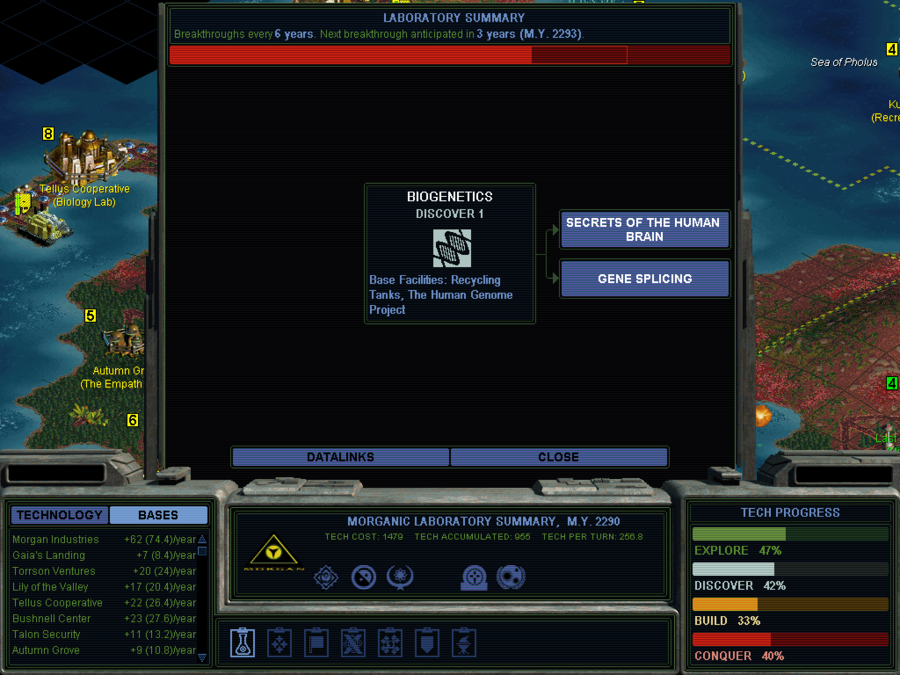
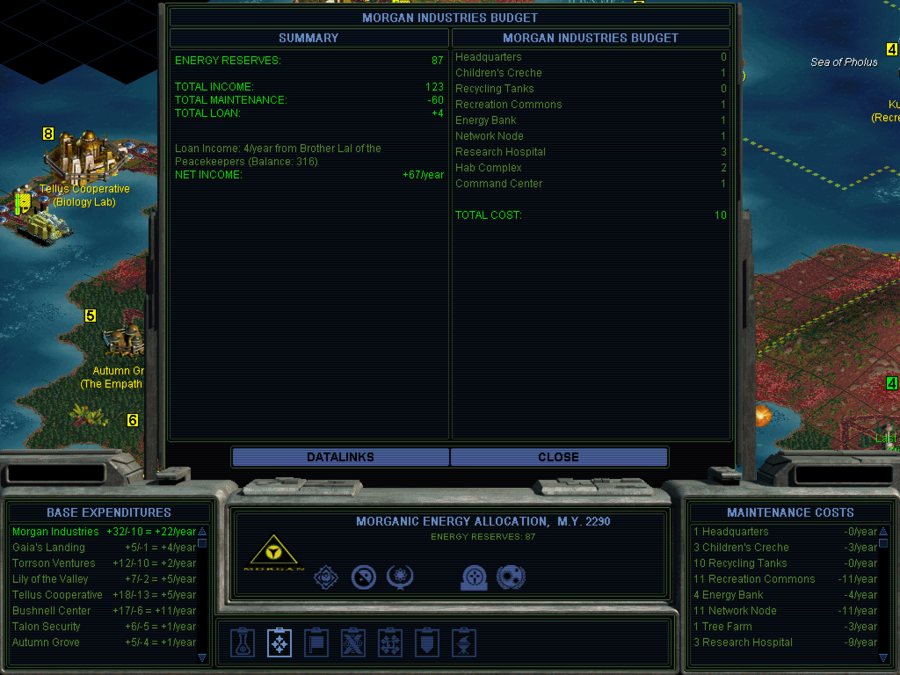
There has been modest growth in the size of the North Pholan economy over the past decade, although nothing to compare to the surge it experienced the decade prior to that. Investment and innovation remain strong, far beyond any of North Pholus' competitors.
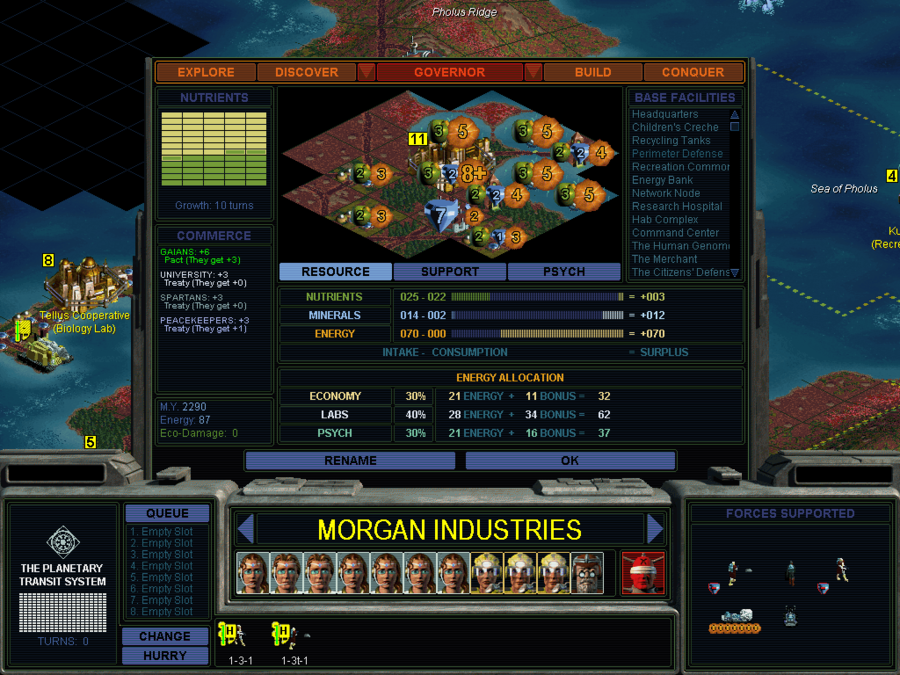
Continued development and investment by various transporation and vehicles firms over the past years has started to bear fruit in North Pholus. Morgan stands at the center of the largest and most efficient transportation network for passengers and freight in all Chiron. Shipping, rail, roads, commercial aircraft, and wide adoption of private vehicles have begun to make it easier, cheaper, safer, and more convenient to travel between settlements in Pholus than ever before. Morgan itself remains the heart of the global economy, helping bind human civilisation on Chiron into a coherent whole.
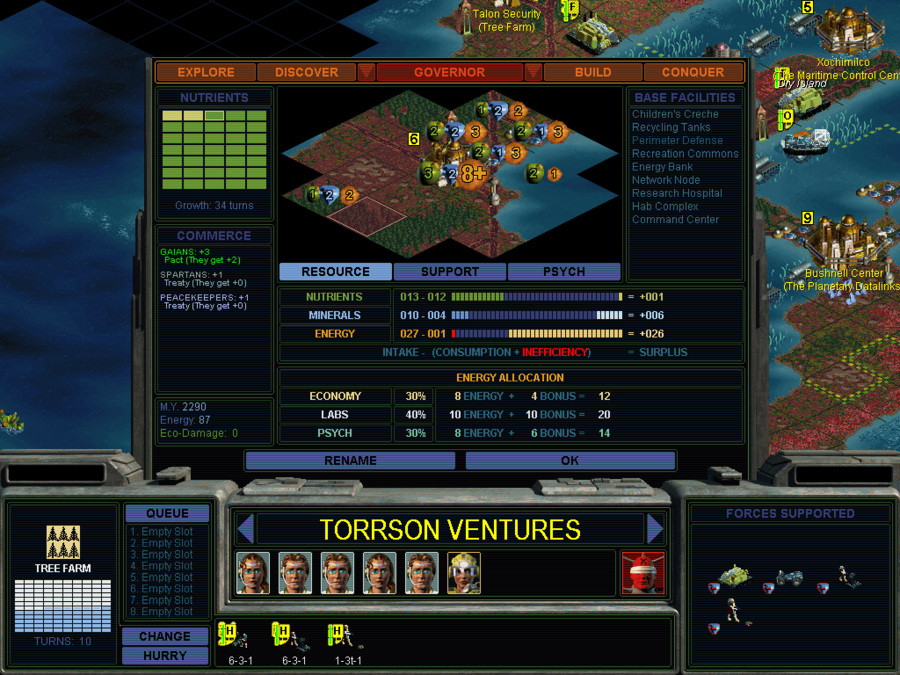
Torrson has continued to grow, and has benefited greatly from its new state-of-the-art medical facilities. The growing demand for food has led to immediate fishing of undeveloped portions of the Freshwater Sea, along with long-term measures in advanced forestry agriculture expected to increase food yields from the surrounding forests.
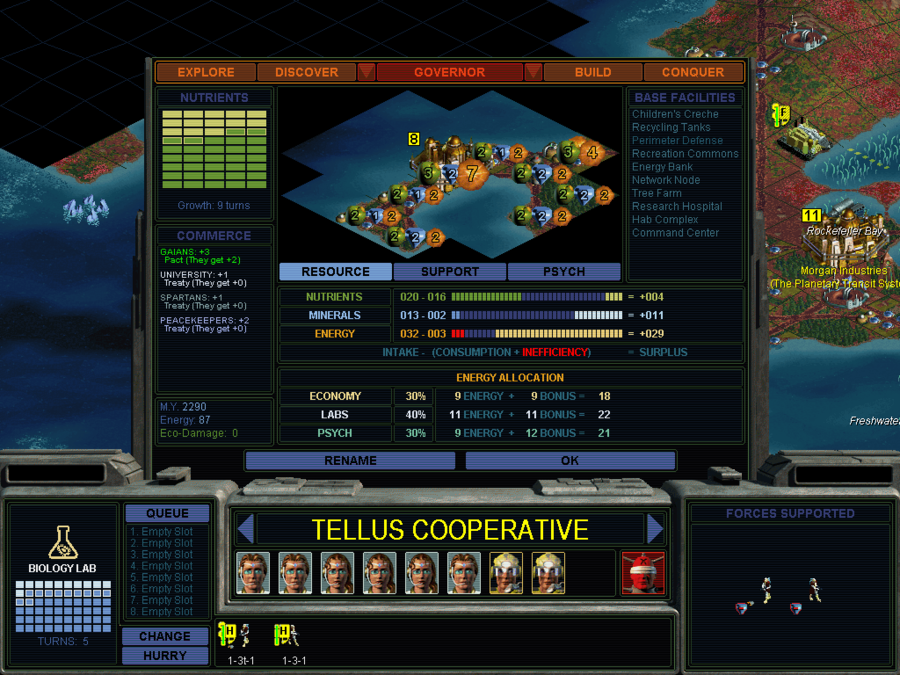
Tellus has become the first settlement on Chiron to deploy advanced forestry agriculture on a large scale, which has provided huge economic benefits as industry has adapted to new inputs of materials. Tellus has also marked the final extermination of xenofungal forests on its peninsula, helping ensure the continued security of the settlement. Morgan Xenobiology has begun constructing a new advanced laboratory in the settlement as a center of study for native organisms.
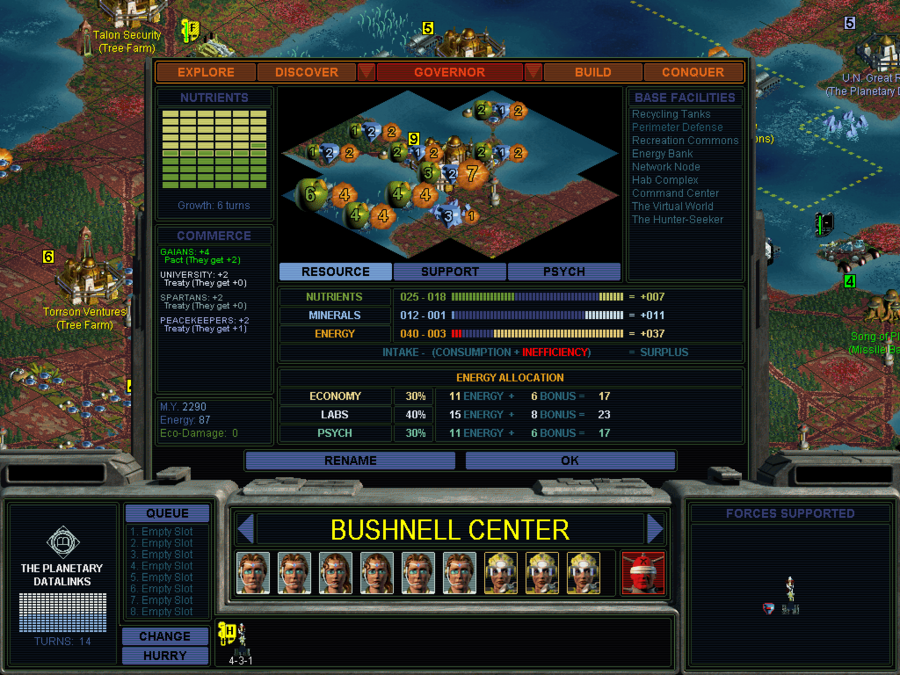
The immense outputs of the kelp farms and fisheries in the Freshwater Sea near Bushnell Center have continued to fuel rapid growth as the settlement continues to be dedicated to constructing network cable across the planet. Although the settlement prospers, many services have had difficulty gaining funding in Bushnell Center recently, and an immense untapped demand in various sectors is waiting to be exploited here. The speed of its construction has been limited by the loss of terraforming teams and equipment, ensuring that the southern mines still have not been restored to full output. The local security forces are still at half-strength, with little opportunity having presented itself for the local government to recruit new replacements.
There are multiple improvements Bushnell Center needs to 'catch up' to where it 'should' be for a settlement of its size, but this can happen once the Planetary Datalinks are finished.
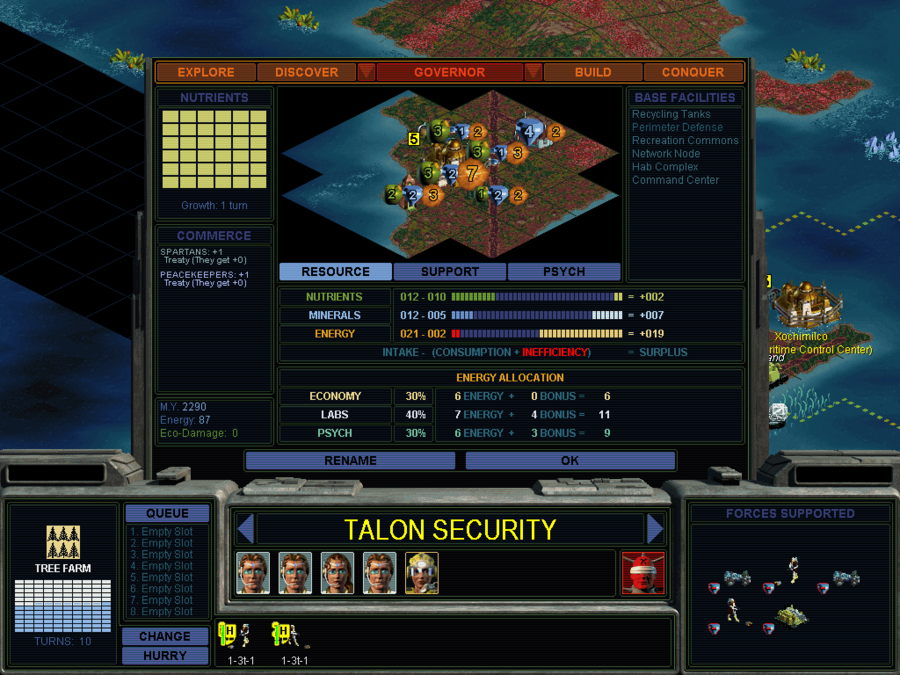
Talon has continued to grow, and a new forestry industry has begun to develop here as terraformer teams have planted new forest to the southeast. Adoption of improved forestry methods is under way, with local forestry firms hoping to improve their efficiency and profitability.

Advanced robotic industry has helped greatly increase the productivity of Xochimilco and support a new growth in population, while new forests planted on Dry Island have helped fuel a new forestry industry based out of Xochimilco. The Tlaloc Initiative has resumed work on a massive shipyard complex intended to be the largest single shipbuilding facility on Chiron, expected to revolutionise the shipbuilding industry across Pholus. The project may be a long time to completion, but has excellent potential for long-term revenues.
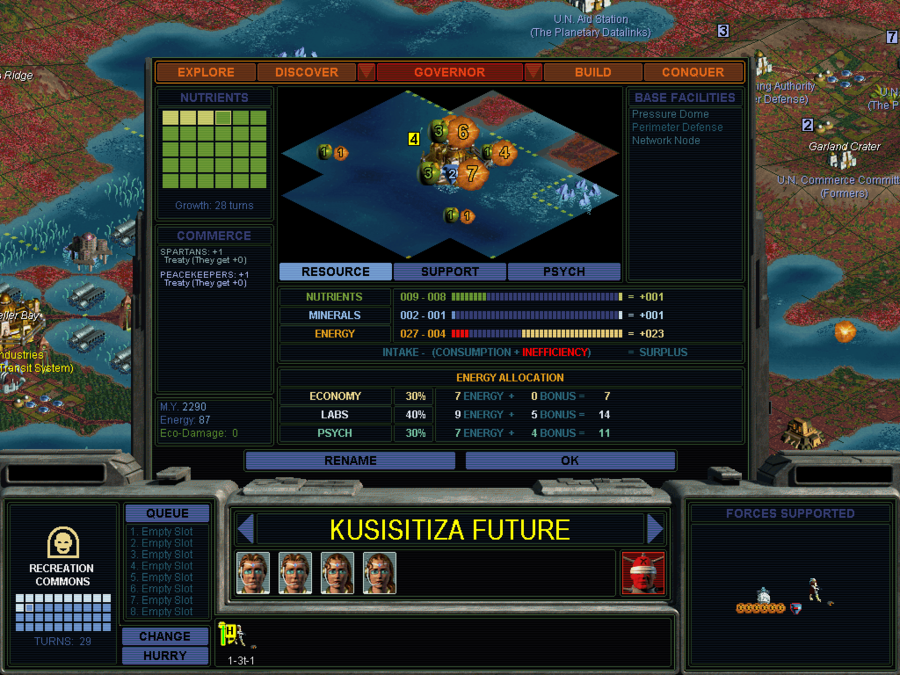
The loss of terraforming boats around Kusisitiza Future has been a notable setback to local development, with the metals deposits to the east still unable to be exploited and local industry short on materials. Support businesses serving the entertainment and comfort of the population have grown here slowly but steadily, fed by the credits of off-duty workers seeking the comforts of civilised life. The geothermal plant to the south has been opened, heavy automation allowing it to be operated with a minimal crew and with shipping ensuring the plant remains supplied. It has been an immense success, providing significant profits to Kusisitiza Datametrics and the investors who helped back the project.
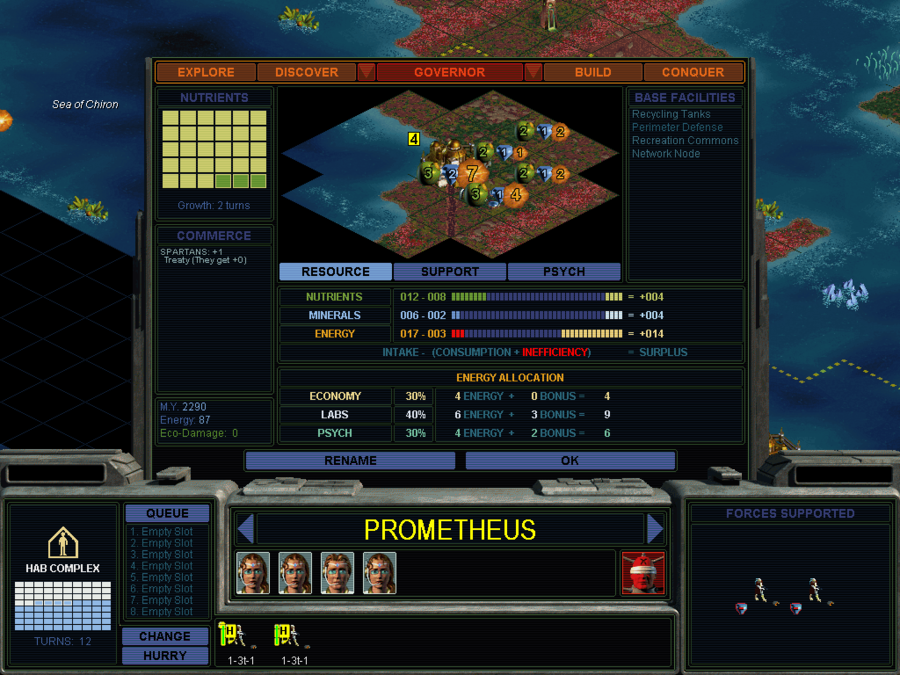
With a thriving ecosystem of restaurants and shops helping supply people and provide employment in Prometheus, the local economy is secure, even as advanced robotics have begun to be used to upgrade local industry and deal with persistent production shortfalls. Prometheus, although prospering, could benefit greatly from terraforming teams, and bids from local businesses to the surviving terraforming firms in North Pholus have begun to come in.
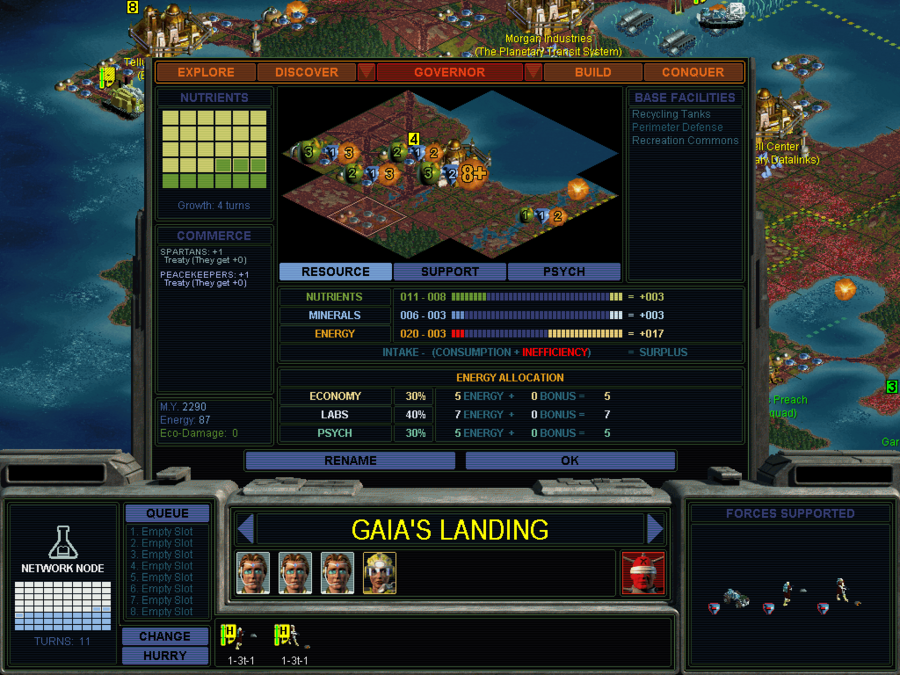
Although Gaia's Landing is prosperous enough, development here has lagged, with relatively weak outside investment and heavy industry. The settlement is the last in North and South Pholus to be fully linked to the Pholus Datalinks, although development of its network infrastructure is underway.
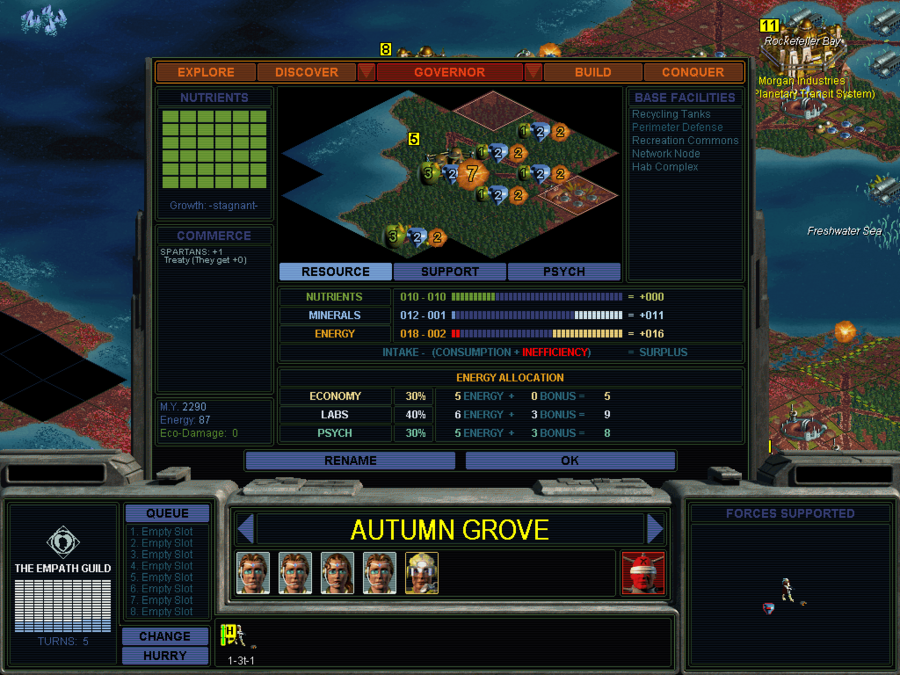
The research of the Sophia Institute into human telepathy using technological aids has made significant strides, and the Sophia Institute has begun to collect many of the best and brightest empaths in Pholus under its leadership. With skilled empaths backing up diplomats and intelligence officers in the Republic of North Pholus, North Pholan foreign policy is expected to become more reliable, even despite the risks of the world. The growing population has begun to strain the local food supply, although not to the level of crisis- returns to agricultural investment in Autumn Grove are already going up.
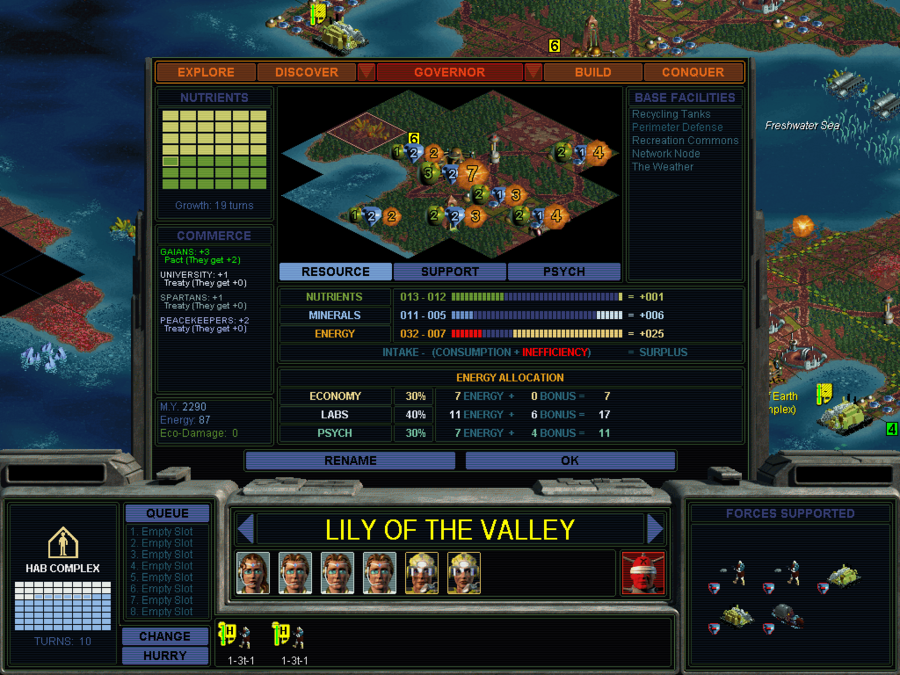
Lily of the Valley has its own network of small recycling firms reprocessing waste, helping provide fuel, chemicals, and fertiliser. New robotic industry has begun to grow in the settlement, which has long strained the capacity of its antiquated industrial base.
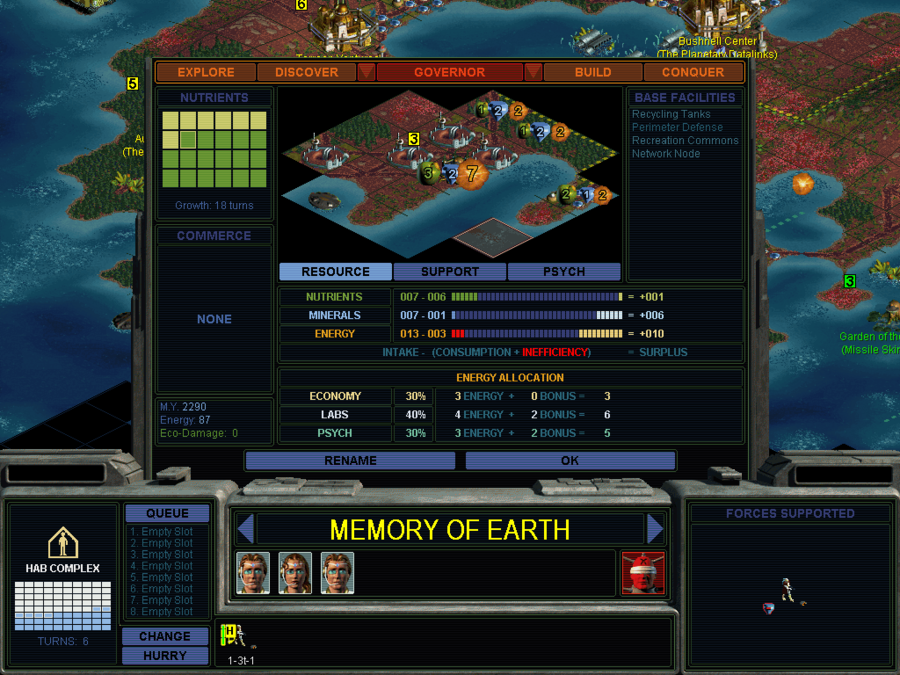
New farms in land cleared from xenofungal forests have helped feed the growing population of Memory of Earth, and the local economy is now solid and prosperous. This has helped support investment into modern robotic industry here. The settlement is no longer truly an underdeveloped backwater, even if it is one of the smaller and less important settlements of Pholus.
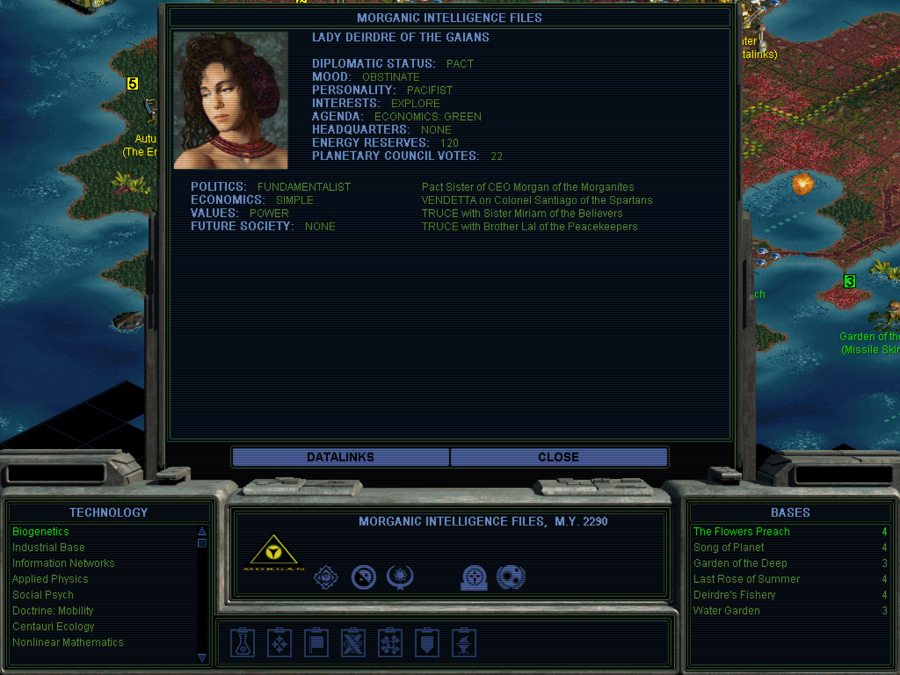
East Pholus has continued to build up its military strength, hoping to build a force that can match the Spartan Federation in battle. Factories all across East Pholus have been dedicated to armor, weapons, vehicles, and other military supplies, while new recruits are being hastily assembled into a stronger army, hoping to recover from its disastrous losses against North Pholus.
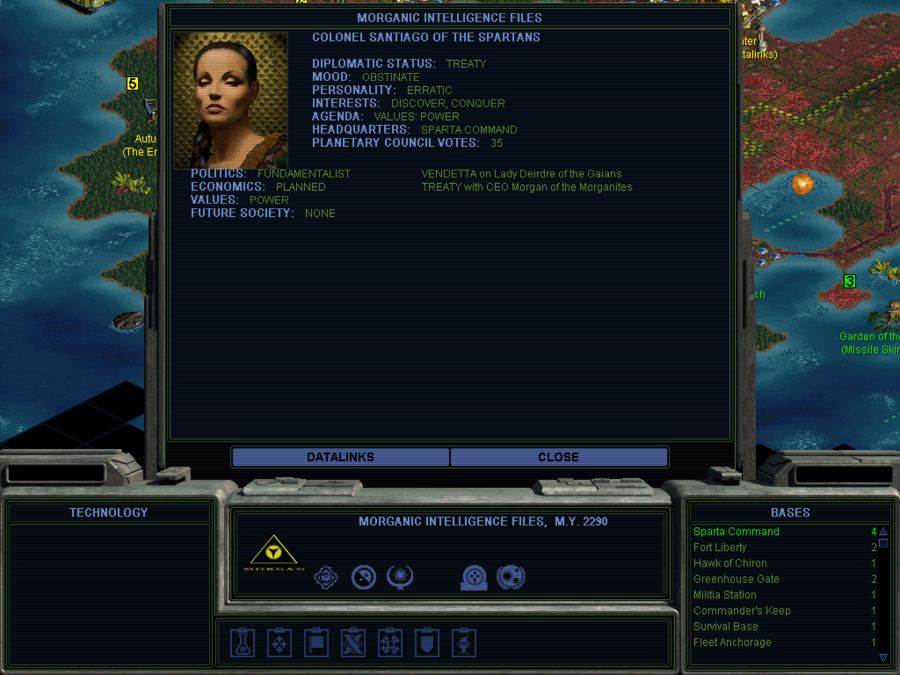
The Spartan Federation remains the one colony on Chiron the Intelligence Service does not have accurate information on, but it is certain that its population and military strength makes it one of the more formidable powers on the planet. Whatever the state of its internal economy- which is a matter of some question, although most analysts believe it cannot be extremely strong- it at least enjoys civic order throughout its territory. It has lost its foothold on Chiron Minor, but it is likely that it will be able to resist any landing by the Holy States on its territory.
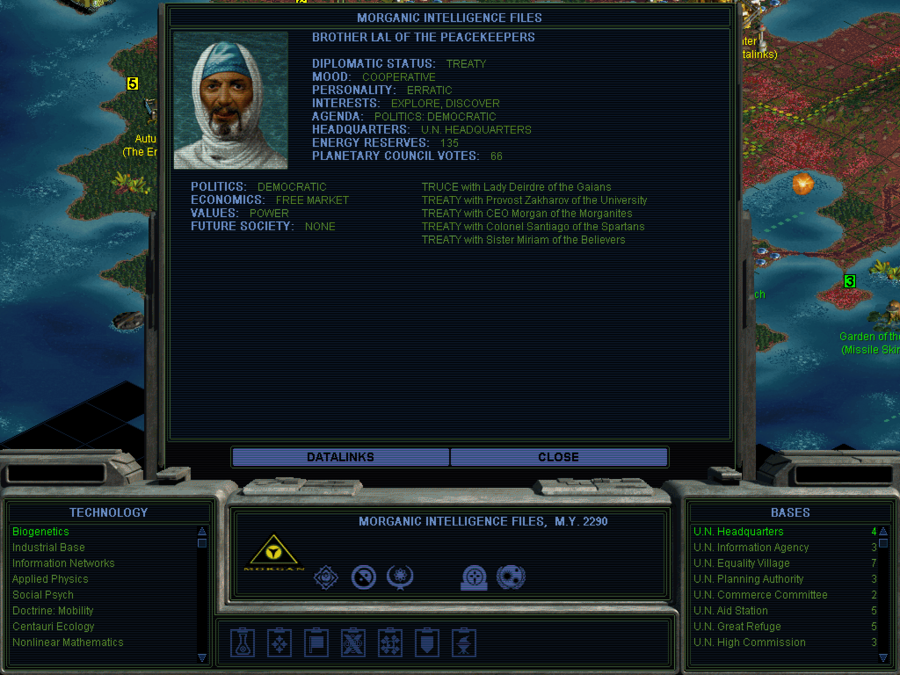
The UNCC continues to be the most prosperous colony outside of Pholus, although its largest settlement, Equality Village, is suffering from an extended economic slump. Quality of life across the UNCC remains generally high, and several of its settlements are marked by notably high labor productivity. Although not as large as the Holy States, its stronger economy and better civic order give it a far brighter future, and its foreign affairs are currently marked by peace and friendship with almost every other colony on Chiron.
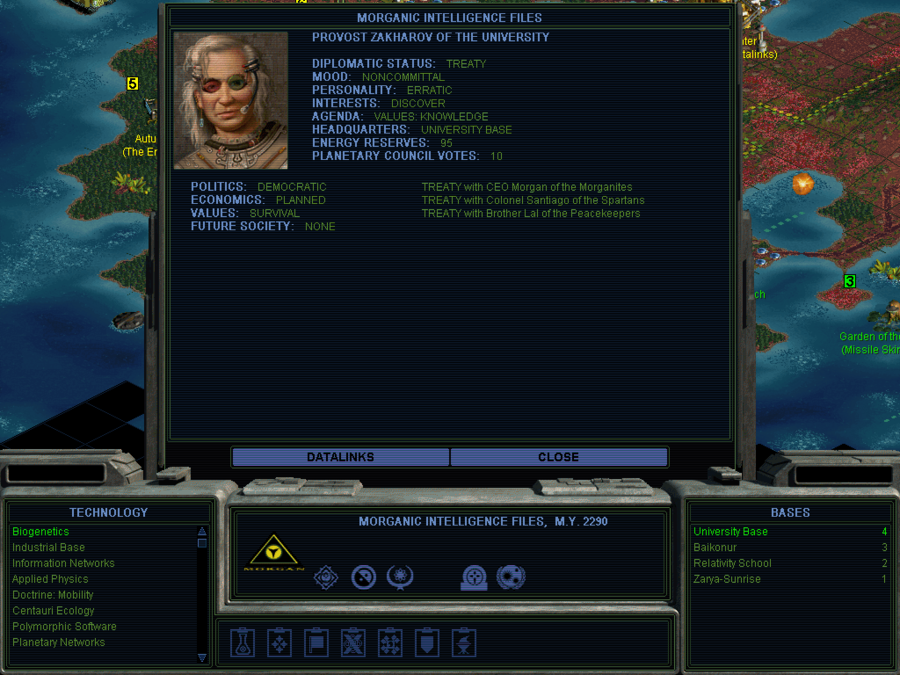
The Free State has sent out its first terraforming teams to develop the territory around University Base, which is expected to greatly improve the thus far marginal economic situation in the Free State. With improved agriculture, thorium collection, and possible forestry, the continued supply shortages which have plagued the Free State may finally come to an end.
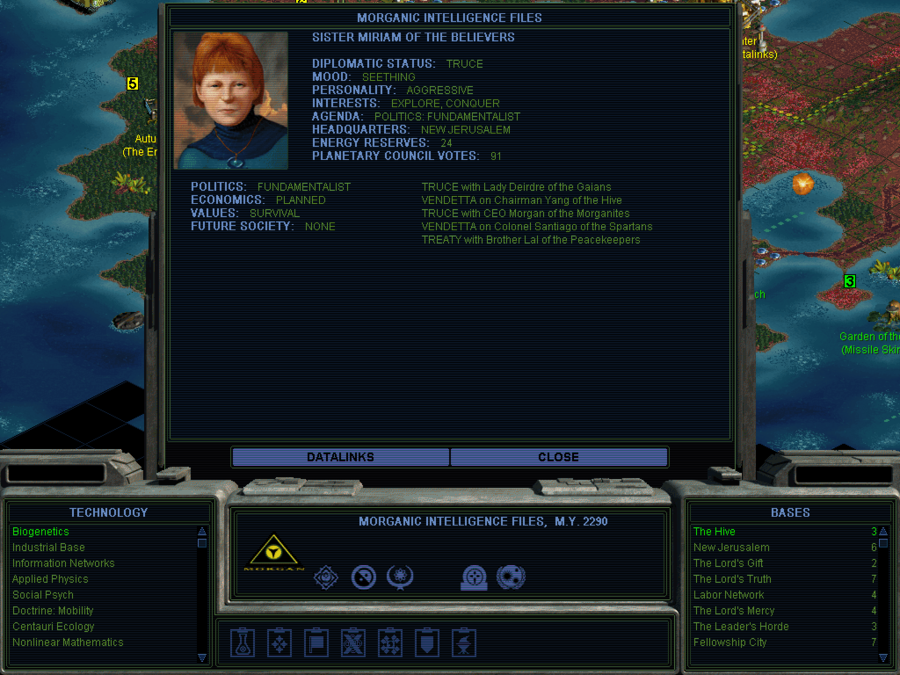
The Holy States teeter on the brink of total economic and social collapse. The materials provided to them in exchange for the truce with North Pholus have been burnt through rapidly, failing to stem the slow disintegration of their infrastructure. Poverty plagues the population, and riots continually grip many of their settlements- including New Jerusalem, the capital. Although their military force is strong, some analysts believe that the Holy States risk outright armed revolt in several settlements if their control of the population does not improve. The settlements seized from the Human Hive are almost economically worthless to the Holy States, which are barely able to keep their native infrastructure functioning.
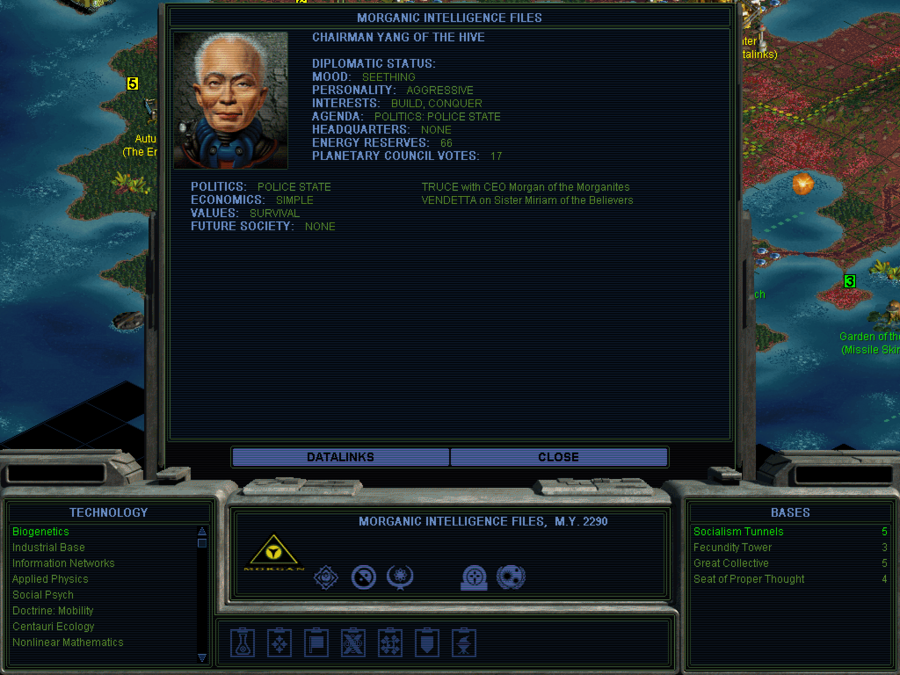
The Human Hive is a nightmarish society of absolute repression, with a nearly non-functional economy serving its population. Although reasonably well-populated and enjoying good terraforming of its countryside, the Human Hive is poorer than any other colony on Chiron, and is essentially incapable of innovation. Although it aspires to a centrally-planned economic system, its primitive network infrastructure limits the extent to which information is available to central offices, which has required allowing a certain degree of latitude to local settlement leaders, who work their populations like slaves. Whether the Human Hive can continue to hold out against the Holy States may, in the end, come down to whether the internal problems of the Holy States break their war effort against the Human Hive.
Continued disruption of communications makes diplomatic overtures impossible, for the moment. North Pholus can only hope that this will not cost them, in the end.